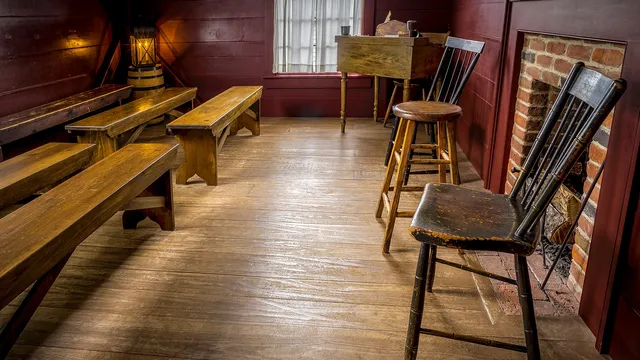
FAIR is a non-profit organization dedicated to providing well-documented answers to criticisms of the doctrine, practice, and history of The Church of Jesus Christ of Latter-day Saints.
FAIR › Scripture Study Resources: Supplement Your Come, Follow Me Study › Study Resources for the Doctrine & Covenants and Church History › Week 33 Establish … a House of God
DOCTRINE AND COVENANTS 88

The Lord declares that “he that receiveth light, and continueth in God, receiveth more light” (D&C 50:24). This principle teaches that spiritual growth is a process. As we act on the light we have, more will be given, reinforcing the importance of living righteously to invite further revelation and understanding.
In D&C 88:119, the Lord outlines what kind of house He wants us to build—a house of prayer, fasting, faith, learning, and glory. This instruction goes beyond physical temples; it applies to our homes, churches, and even our own lives. Each of these should reflect divine attributes to invite the Spirit.
When our lives reflect the attributes of a “house of God,” we create an environment where the Holy Spirit can dwell. This brings peace, unity, and inspiration. It also prepares us to receive personal revelation and instruction from the Lord, just as the early Saints were commanded to prepare themselves for temple worship.
As emphasized in the “Seeking Knowledge by the Spirit” resource, revelation through the Holy Ghost is personal and often comes quietly. Those who cultivate humility and sensitivity to the Spirit are more likely to receive divine insight that leads to wisdom, growth, and direction.
If you have questions on this week’s reading, please email your questions to us here.
Practical solutions for someone in faith crisis:
Action Step: Designate and cultivate a specific space in your home as a peaceful, Spirit-filled environment for prayer, study, and worship.
When we mirror the Lord’s instructions to build a “house of prayer, fasting, faith, learning, glory” (D&C 88:119), our homes become sanctuaries where the Spirit can dwell more abundantly. These sacred environments help us and our families receive personal revelation and find peace in a chaotic world.
Encouraging Thought:
Action Step: Approach your learning with both intellectual effort and spiritual intent—study with prayer and invite the Holy Ghost into your learning process.
True learning is most powerful when it integrates both mind and spirit. Doctrine and Covenants 88:118 teaches that “the Spirit…shall enlighten your mind,” helping you discern truth and gain wisdom beyond the pages of a book.
Encouraging Thought:
Doctrine and Covenants 50:24 teaches that “he that receiveth light and continueth in God receiveth more light.” Small, intentional choices either draw us closer to Christ or distance us from Him. Living by light attracts more light, clarity, and joy.
Encouraging Thought:
“Light cleaveth unto light.” (D&C 88:40) — The Lord multiplies the light we seek. Even a small flicker of effort can grow into steady spiritual brightness.
Objective: Help learners visualize what it means to build a spiritual “house of God” in their personal lives and homes.
Paper bricks or blocks, markers, scripture printouts (D&C 88:119), tape or board space
Activity Steps:
Follow-Up Question: What’s one way you can invite more of the Spirit into your home this week?
Objective: Teach that both study and faith are essential for true learning and spiritual growth.
Two clear jars, water, oil (or colored liquids), labels: “Study,” “Faith,” scripture slips (D&C 88:118), notebooks
Activity Steps:
Introduction (5 min): Show the two jars: one filled with water (“study”), one with oil (“faith”). Ask, “Can we really learn truth if we only rely on one of these?”
Scripture Discussion (5 min): Read Doctrine and Covenants 88:118. Discuss what it means to seek learning “by study and also by faith.” Pour both liquids into a third jar—discuss how even if they don’t mix perfectly, they work together.
Application (5 min): Have learners write down a topic they’re curious about (spiritual or temporal). Then write how they could study it and exercise faith while learning it. Invite them to apply it this week.
Follow-Up Question: “How do you think faith changes the way you approach learning?”
Objective: Help learners recognize how light and truth from God are found in everyday moments.
Small flashlight or glowsticks, scripture slips (D&C 88:6–13, 40, 67), “light hunt” worksheet
Activity Steps:
Introduction (5 min): Dim the lights and turn on a small flashlight. Say, “Even a little light can change everything.” Ask, “Where do you notice spiritual light in your life?”
Scripture Discussion (5 min): Read selected verses from Doctrine and Covenants 88 about light (esp. vv. 6–13, 40, 67). Discuss how light is both literal and symbolic in these verses
Application (5 min): Give learners a “light hunt” worksheet with prompts like “I feel light when…”, “A person who radiates light is…”, “I add light when I…” Have them fill it out silently or in pairs, then share one insight.
Follow-Up Question: “What’s one way you can increase spiritual light for yourself or someone else this week?”

FAIR is a non-profit organization dedicated to providing well-documented answers to criticisms of the doctrine, practice, and history of The Church of Jesus Christ of Latter-day Saints.
We are a volunteer organization. We invite you to give back.
Donate Now